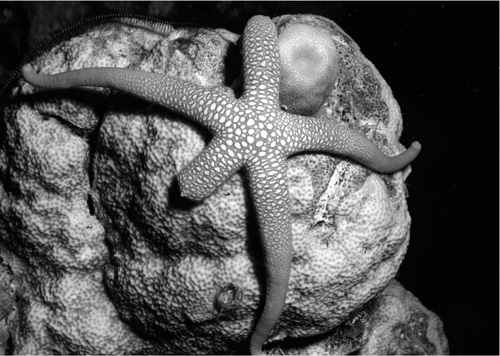Physiology: Animal Function and ReproductionReproduction |
What are some methods of asexual reproduction? |
Budding, fission, and fragmentation are methods of asexual reproduction. In budding a new individual begins as an outgrowth, or bud, of the parent. Eventually, the bud detaches from the parent and develops into a new individual. Budding is common among sponges and coelenterates such as hydras and anemones. Fission is the division of one individual into two or more individuals of almost equal size. Each new individual develops into a mature adult. Some corals reproduce by dividing longitudinally into two smaller but complete individuals. Fragmentation is the breaking of the parent into several pieces. It is accompanied by regeneration when each piece develops into a mature individual. Sea stars are well known for reproducing by fragmentation and regeneration. (For more about reproduction processes, see the chapter “Cellular Basics.”)

Sea stars—also called starfish—have the remarkable ability to not only regenerate an arm that has been lost, but also to reproduce asexually. A lost arm, if not eaten by a predator, can form an entirely new sea star!
